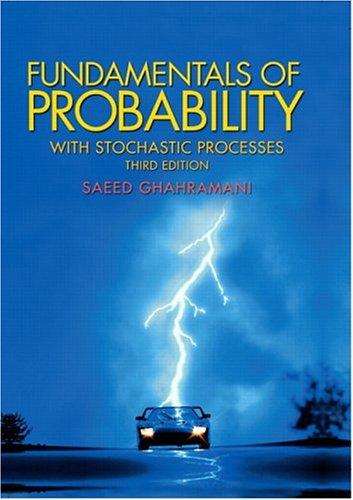17. Let X be a nonnegative random variable with distribution function F. Define I (t) = B...
Question:
17. Let X be a nonnegative random variable with distribution function F. Define I (t) = B 1 if X > t 0 otherwise.
(a) Prove that # ∞ 0 I (t) dt = X.
(b) By calculating the expected value of both sides of part (a), prove that E(X) = E ∞ 0 4 1 − F (t)5 dt. This is a special case of Theorem 6.2.
(c) For r > 0, use part
(b) to prove that E(Xr ) = r E ∞ 0 t r−14 1 − F (t)5 dt.
Fantastic news! We've Found the answer you've been seeking!
Step by Step Answer:
Related Book For 

Fundamentals Of Probability With Stochastic Processes
ISBN: 9780131453401
3rd Edition
Authors: Saeed Ghahramani
Question Posted:






